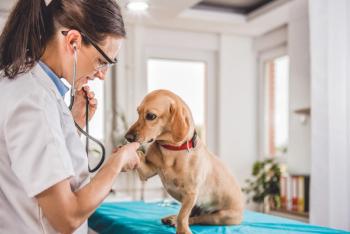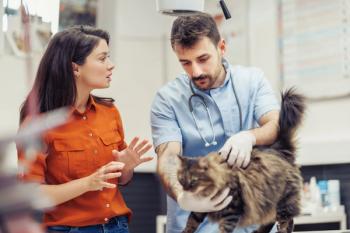
The circle of lifeand professional identity as veterinarians
Many veterinarians are concerned about the economic sustainability of the profession. But I can't help but notice that discussions are focused primarily on the companion animal market. Yes, the companion animal sector represents 50 percent of the veterinary services industry, and wields a lot of economic muscle, yet companion animals are not the only focus of veterinary profession.
It seems that we're seeking a 20th-century professional identity that no longer exists. In light of climate change, increasing incidence of global zoonotic disease and the need to increase global food supplies by 70 percent by 2050, we'd be wise to return to our original mandate in service of the public health. Healthy animals sustain healthy people. This is One Health.
We need to break down siloes across all sectors of the profession, including companion animal, equine, food animal, industry, public practice, wildlife and ecosystems health, global food security and academia.
What the problem is not
The problem is not how to increase demand for veterinary services in the companion animal sector or how to decrease the supply of veterinarians into the marketplace. A basic precept of economics is that supply and demand are in direct relationship to one another and seek equilibrium in response to other market factors. Therefore, we're asking the wrong questions and implementing “fixes” in the wrong places. We need to go back to business basics and assess the market needs:
> What are society's needs for veterinary services?
> Where are the pain points?
> Where are there opportunities for innovation in the market?
> What are the market's current needs for veterinary services?
> Are there jobs available that are responsive to society's needs for veterinary services?
> What's going on in the external economic environment that gives clues about the future of veterinary services?
> How does the current veterinary workforce need to be equipped in order to be agile and responsive to market needs?
> What kind of skills and brainpower do we need to recruit into veterinary schools to respond to the public health demands of society?
Our professional identity
Even before James Herriot came on the scene with his fabulous books, veterinarians enjoyed the public's adoration with a far-reaching halo effect. If we want to sustain our reputational capital as a profession, we are well poised to be the heroes and heroines in the face of global climate change and the massive systemic effect that's having on global public health.
In the Disney movie The Lion King, a really smart lion named Mufasa says something like, “We're all connected to the circle of life.” Therein lie the seeds of our new professional identity. We need to realign our professional identity in response to the realities of the external economic environment. This is not about responding to the career desires of incoming veterinary students who've watched too many episodes of Emergency Vets. The answers lie in the collaboration across all sectors of the veterinary services industry and for members of these sectors to respond holistically and systemically to the needs of society and the marketplace.
Responding to needs
So how do we respond to our professional misalignment with the demands of society and fix this business model? How can we better communicate the full spectrum of exciting, rewarding career paths that exist outside of companion animal practice?
What we need is a sustainable infrastructure to support a new veterinary services business model based on One Health functionality.
Step 1: Change begins by accepting responsibility for the current condition of our profession. Pogo said, “We've met the enemy, and he is a us”-which underscores the foundational concept of systems thinking; that is, we are part of the system. No single entity has the knowledge, authority, resources or perspective to fix the problems facing the U.S. veterinary profession-not the AVMA, AAVMC, CDC, NIH, NAS, the animal health industry, regional, state or national governments or agencies, not global nongovernment organizations such as the FAO, WHO or the World Veterinary Association or the Bill and Melinda Gates Foundation. But do we need all of these entities to collaborate and work together? The answer is yes, absolutely.
Step 2: Let go of superficial solutions based on increasing patient visits to the veterinary clinic.
Step 3: As part of the system, we have the power to influence change by changing ourselves. Change starts with getting clear about our professional identity and our purpose.
Step 4: Develop a shared vision and definition of One Health.
Step 5: Establish sustained communications across the industry.
Step 6: Start investing knowledge and financial resources into a thorough analysis of system function and system structure of the veterinary services sector by using system thinking modeling tools and computer simulations.
Step 7: Identify leverage points in the system structure to free up opportunities for market-responsive innovations that drive change towards a new One Health-based veterinary services paradigm.
Step 8: Implement those changes.
Step 9: Revaluate alignment with our professional identity and purpose.
Step 10: Reiterate steps 5 through 10.
Newsletter
From exam room tips to practice management insights, get trusted veterinary news delivered straight to your inbox—subscribe to dvm360.






